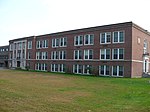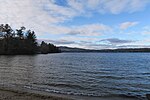Franklin, New Hampshire
1828 establishments in New HampshireCities in Merrimack County, New HampshireCities in New HampshireFranklin, New HampshireMassachusetts populated places on the Merrimack River ... and 2 more
Populated places established in 1828Use mdy dates from July 2023

Franklin is a city in Merrimack County, New Hampshire, United States. At the 2020 census, the population was 8,741, the least of New Hampshire's 13 cities. Franklin includes the village of West Franklin.
Excerpt from the Wikipedia article Franklin, New Hampshire (License: CC BY-SA 3.0, Authors, Images).Franklin, New Hampshire
Central Street, Franklin
Geographical coordinates (GPS) Address Nearby Places Show on map
Geographical coordinates (GPS)
| Latitude | Longitude |
|---|---|
| N 43.444166666667 ° | E -71.6475 ° |
Address
Central Street 301
03235 Franklin
New Hampshire, United States
Open on Google Maps









